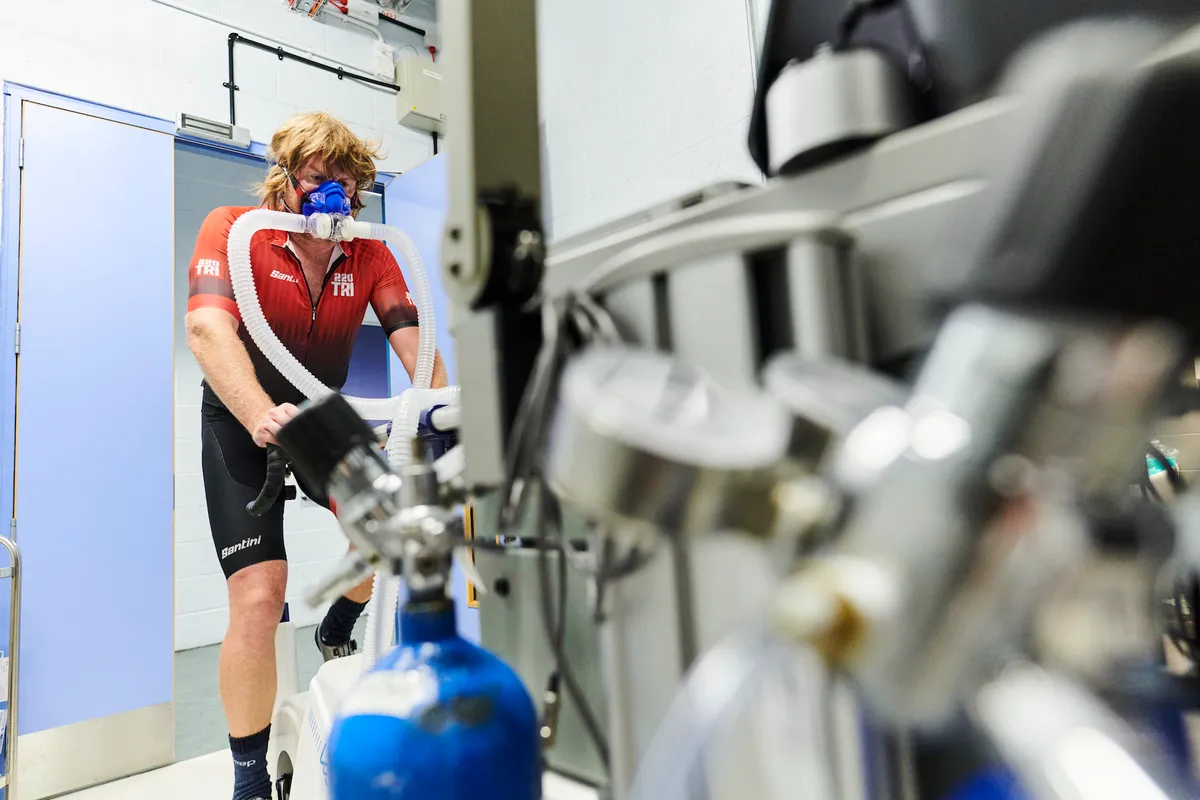Been hearing the phrase 'VO2 max' thrown around but not actually sure what it means? Don't worry, you are certainly not alone.
Sometimes it can be hard to keep up with the vast array of concepts, metrics and terminology within triathlon training. To help you out, we've asked Tri Training Harder founder and head coach Philip Hatzis to explain what VO2 max is, what's a good VO2 max and how it's affected by age.
What is VO2 max?
VO2 max, also known as aerobic capacity, is the metric used to describe the total amount of oxygen your body can utilise at a sustained maximum level of work.
The greater the amount of oxygen you can take in and utilise, the more energy can potentially be created aerobically, and the faster you will potentially go. The speed/rate of work you can sustain at this maximum level indicates aerobic performance potential.
Athletes are more familiar with the term VO2 max instead of aerobic capacity. Simply, it’s the maximum volume of oxygen that the body can process aerobically per kg of body weight per minute: VO2 max, mL/kg/min.
A typical test for this would be a ramp test (increasing power/speed every few minutes) while wearing a mask that collects the exhaled air. This determines the maximal or near-maximal oxygen uptake.
VO2 max is partly genetic and differs by sport. Therefore, it’s important to strive for a higher VO2 max based on your own personal ‘high’ within your sport.
Does VO2 max predict performance?

The speed or work rate sustained at VO2 max accounts for performance differences, but VO2 max does offer an insight into performance potential. It tells us how big the 'engine' is.
Jack Daniels (the running coach, not the whiskey) uses the term VDOT to explain these differences. VDOT is the speed at VO2 max. His formula or table recognises that someone's VO2 max does not predict their performance and other factors can mean a loss in performance, even among athletes with the highest VO2 max scores.
Therefore, using the VDOT, runners acknowledge that their performance is not the same as their performance potential. The former is likely to be reduced due to a host of different individual reasons. For example, biomechanics, mental toughness or any other running factor.
But then, athletes with identical VDOT scores may have vastly different VO2 max ones. In the same way, athletes with the same results in a race may have different VO2 max scores. The athlete with the lower score is arguably more efficient as their performance is relatively higher.
VO2 max is limited by the heart, and therefore training to develop VO2 max should focus on heart rate instead of power or pace. Power or pace can be used as guidelines of effort to get close to VO2max heart rates, but the heart rate needs to be the focus of the training session.
What is a good VO2 max?
A top-level VO2 max score will be in the region of 60-80 for men, while women will be about 10-15% lower. As we mentioned before, VO2max differs by sport, so cross-country skiers who use both arms and legs generally have the highest VO2max scores recorded because they are using all four limbs and their oxygen demand is higher.
Cyclists will have a lower score when testing because they only use their legs. Nevertheless, the concept that a higher number is better is true. As before, it shows the engine's capacity or performance potential.
What is a good VO2 max for my age?
Some of the many changes experienced as athletes get older are that the maximum heart rate decreases, skeletal muscle mass drops, stroke volume reduces, aerobic enzymes in the muscles reduce and blood volume decreases.
All of these factors combine and can lead to a drop of VO2 max by up to 10% per decade after the age of 40.
Recalling that VO2 max is partly genetically set, though several tables are available to compare your VO2 max to your peers, it is more important to see if your VO2max is fading or remaining compared to your own previous self. In other words, are you staving off the effects of age through intensive and varied training?
VO2 max is a helpful measure of potential performance. The testing process can help identify key turn points and physiological targets, which will help ensure training is more targeted and more efficient. It is critical to ensure limited junk miles to enable maximum recovery as you get older.
Top image credit: Getty Images
